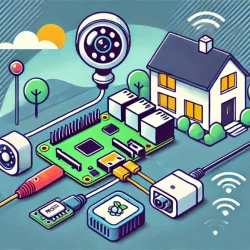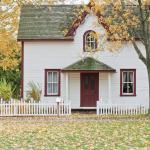Fire Prevention in the Home: What You Do CAN Save Your Life
The National Fire Protection Association reports that in 2003 there were 3925 deaths due to house fires. Furthermore, in the United States, someone dies in a fire every 134 minutes. Sadly, while children under the age of five make up only nine percent of the population, they make up seventeen percent of fire deaths. These statistics are downright frightening, but the good news is that there are ways to prevent this from happening to your family.
Be aware of potentially harmful objects in your home. There are everyday objects in most homes that are true fire hazards – clothes dryers, furnaces, space heaters, fire places and appliances. To reduce the risk of these items, stay aware of when they are in use and monitor them carefully. For example, don’t start a load of laundry in the dryer and then leave the house to run errands. Turn off the dryer or stay home until the load is finished. Also, if you notice a strange smell coming from a small appliance in the kitchen, there may be a fault in the wiring. Unplug it immediately and do not use it until it has been properly repaired.
Bring fire into the home only under the strictest supervision. Wood burning fireplaces and furnaces are a great treat in the cold winter months, but it’s important to remember that by using these items you are welcoming fire into your home. Do so only under strict supervision and make sure that the furnace or fireplace is up to code. It’s important to have all components of your wood burner inspected yearly including the chimney.
Candles are also dangerous. In fact, misuse of candles cause around two percent of all fires. It’s not necessary to ban candles from your home, however, just use caution when lighting them. Trim the wicks and keep the flame away from flammable substances and drafts.
Clutter is bad. One of the best ways to reduce fire in your home is to reduce the amount of clutter. This means keeping the garage or shop organized because there are often many flammable substances in garages from gasoline and oil to paint and painting supplies. Dust and sawdust can also help fuel a fire when there is a large build-up in the garage or attic.
Plan your escape route. Keeping corridors and exits clear of clutter is also a safety factor. If there would be a fire in your home, you’ll want the exits clear and open to help you and your family exit as quickly and as smoothly as possible – during fires, the amount of smoke can make it difficult to see obstacles. You’ll also want to make sure there are two exits from every room in the house, especially bedrooms. This may require you to have fire ladders stashed in each room so that you can use second and third story windows as emergency exits.
Taking the proper steps to prevent fires in your home as well as preparing your potential exits will help you not only protect your house and your family, but also better ensure a safe escape if there ever is a fire.
Fire Safety and Children: Education is Key
We cannot just expect our children to know what to do when it comes to a house fire. It takes a lot of practice and a lot of repetition to help them know what to do if the tragedy strikes the home and even then, you’ll still need to be prepared to help them if you ever do experience a house fire.
Making them aware. First of all, children need to know about the dangers of fires. The National Fire Protection Association cites that around one-fourth of fires are started due to children experimenting with fires. They need to know about the dangers of fire. Additionally, it’s the parents’ responsibility to keep matches and lighters out of reach of children. You should also teach children that if they see matches or lighters that they shouldn’t touch them, but instead immediately tell an adult.
The second way to make children aware stems from the fact that studies have shown that children are often in such a deep sleep that standard smoke detectors do not wake them up – even if they are in the children’s bedrooms. It’s important to not only teach them what the smoke detector sounds like and what it means, but to also go in and wake them up if the smoke detectors go off in the middle of the night.
Practice makes perfect. Current recommendations are that you make a fire escape plan and practice it often with your children. This includes making a floor plan that highlights the multiple exits from each room, making sure that the windows are not stuck and that the screens can be easily removed and equipping upper stories with fire escape ladders. When you practice your fire escapes, make sure the children know how to use the ladder. It’s also a good idea to have everyone practice “feeling” their way out of the house in case they are unable to see during the actual fire.
Having a plan and teaching your children how to use it is the best way to ensure that everyone will escape the house in the event there is a fire.
Fire Safety Tips
1. All houses should have at least one 85 decibel smoke detector on each floor and outside each bedroom door. These detectors should be tested monthly and the batteries should be replaced annually or as soon as they start chirping.
2. If you use a wood burner in your home (either a fireplace or furnace) never, ever use a flammable liquid to start a fire. Additionally, don’t use treated wood, plastic or trash in your fire. Doing so can emit poisonous fumes into the home or it can cause corrosion to the furnace or fireplace components.
3. Never ever leave a candle unattended even if you are just in a different room in the house. It’s also important that candles are not near flammable items such as furniture, paper products, drapes or bedding. Drafts can grow the flame and make it more susceptible to catching something on fire.
4. Have a fire extinguisher in your home. In fact, have one in the kitchen, one in the garage and one in the workshop. All fire extinguishers should be the ABC grade so that they can extinguish fires on ordinary objects (grade A), flammable liquids (grade B) and electrical fires (grade C).
5. Agree on a fixed location that your family will meet at if there ever is a fire in your home so that you can quickly do a head count to make sure everyone is out of the home.
We've got solutions to help you cope with all of these situations. Your life becomes easier and safer when you have unique safety and protection products from RubyStone.com. Please visit our website at http://www.rubystone.com for Fire Safety tips and Fire Safety section for dependable products to keep you and your family safe.
You CAN Protect Your Loved Ones In An Emergency-By Being Prepared, Not Scared!
Ruby started RubyStone Enterprises to help keep you and your little ones safe. At http://RubyStone.com we offer a wide range of Free Safety advice, Free Newsletters, guides and tips as well as the very latest in unique safety products to help you protect yourself and loved ones.




